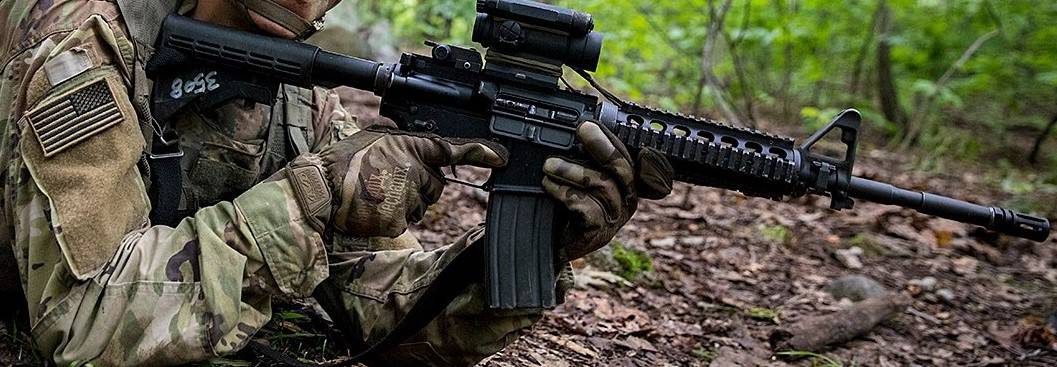The M4’s split personality creates a scope problem most shooters get wrong. You need true 1x magnification for room-clearing and close quarters—anything higher handicaps you when targets appear at arm’s length. But you also need enough magnification to make precision shots at 200-300 yards where the 5.56 still has plenty of energy. Stack on the requirement for illumination (low-light work), decent eye relief, and keeping weight reasonable, and you’ve narrowed the field considerably. After testing dozens of optics on my M4, I kept coming back to the Vortex Viper PST Gen II 1-6x24mm as the scope that actually solves this challenge rather than compromising one end or the other.
My Top 4 Picks for the M4
Best Overall
Vortex Viper PST Gen II 1-6x24mm
The Viper PST Gen II hits the M4’s sweet spot with true 1x for close work and 6x for precision at distance. Its illuminated VMR-2 reticle stays fast in CQB while offering holdover reference points when you dial up magnification. The glass quality punches above its price point, and the 112.5-foot field of view at 1x is the widest in this test—critical when you’re working close.
Best for Competition Use
Primary Arms SLx 1-8×24 FFP
The SLx extends your range to 8x while weighing less than the Vortex, and that ACSS Raptor reticle is purpose-built for 5.56 ranging and holdovers. First focal plane means your subtensions stay consistent across the magnification range, which matters when you’re moving fast through variable-distance stages. It’s a serious performer if your M4 sees competition use.
Best Lightweight Option
Leupold VX-Freedom 1.5-4x20mm
At 9.6 ounces, this Leupold barely adds weight to your M4. The 1.5-4x range covers basic carbine work, and Leupold’s glass clarity is excellent for the price. No illumination and no true 1x limit it for tactical applications, but if you’re building a lightweight hunting or ranch rifle in 5.56, it’s hard to beat the value.
Traditional Hunting Alternative
Leupold VX-Freedom 3-9x40mm
This scope makes the list because shooters keep asking about it, but it’s the least suitable for the M4’s intended role. Starting at 3x with a narrow field of view, it’s a hunting scope trying to work on a tactical carbine. If your M4 is strictly a 100-300 yard varmint or coyote rifle and you’ll never need close-range capability, the glass quality is solid—just understand what you’re giving up.
Why You Can Trust My Recommendations
I learned about the M4’s scope requirements the hard way during a carbine course in 2009. I’d mounted what seemed like a sensible 2-7x scope on my rifle—plenty of magnification, decent glass for the money. The instructor ran us through close-quarters drills first, and I was fumbling behind that optic trying to find targets at 15 yards while shooters with red dots and true 1x scopes were engaging smoothly. When we moved to 200-yard work, my scope suddenly made sense, but by then I’d already lost valuable time and learned a lesson I won’t forget.
That experience, combined with my five years at Bass Pro Shops helping customers build AR-15s and my work at ScopesReviews since 2017, taught me that the M4 demands specific scope characteristics. I am NRA Range Safety Officer and Certified Firearms Instructor, and I’ve tested over 200 rifle scopes across multiple platforms. For this guide, I mounted and extensively tested four scopes that actually meet the M4’s unique demands—and rejected several that didn’t.
Side-by-Side Specs
Looking at raw numbers only tells part of the story on the M4, but field of view at minimum magnification matters more here than on most rifles.
| Features | Vortex Viper PST Gen II 1-6x24mm | Primary Arms SLx 1-8×24 FFP | Leupold VX-Freedom 1.5-4x20mm | Leupold VX-Freedom 3-9x40mm |
|---|---|---|---|---|
| Magnification | 1-6x | 1-8x | 1.5-4x | 3-9x |
| Objective Diameter | 24mm | 24mm | 20mm | 40mm |
| Eye Relief | 3.8″ | 3.3″ – 3.2″ | 4.2″ – 3.7″ | 4.2″ – 3.7″ |
| Weight | 22.7 oz | 17.9 oz | 9.6 oz | 12.2 oz |
| Length | 10.8″ | 10.3″ | 9.35″ | 12.49″ |
| Tube Size | 30mm | 30mm | 1″ | 1″ |
| Reticle | VMR-2 MOA (SFP) | ACSS (FFP) | MOA-Ring (SFP) | Duplex (SFP) |
| Field of View | 112.5 – 18.8 ft @ 100 yds | 105.0 – 14.3 ft @ 100 yds | 74.2 – 29.4 ft @ 100 yds | 33.1 – 13.6 ft @ 100 yds |
| Turret Style | Capped | Capped | Capped | Capped |
| Adjustment Range | 160 MOA Elevation/ 160 MOA Windage | 130 MOA Elevation/ 130 MOA Windage | 125 MOA Elevation/ 125 MOA Windage | 60 MOA Elevation/ 60 MOA Windage |
| Click Value | 1/2 MOA | 1/4 MOA | 1/4 MOA | 1/4 MOA |
| Parallax Adjustment | Fixed at 100 yards | Fixed at 100 yards | Fixed at 150 yards | Fixed at 150 yards |
| Illumination | Yes | Yes | No | No |
The 4 Best Scopes for M4 Carbine
1. Vortex Viper PST Gen II 1-6x24mm – Best Overall

What True 1x Actually Means
I mounted the Viper PST expecting disappointment at minimum power—most “1x” scopes aren’t. Both eyes open at close range, the reticle floated in front of my face without any tunnel vision or shadow ring. I could track targets through the scope as naturally as with iron sights. During transition drills at 15 yards, moving between three steel targets, the scope never slowed me down. Compare that to the Leupold 1.5-4x where I constantly felt like I was looking through a narrow tube at close targets.
The Illuminated Dot Under Actual Sun
Texas summer testing—full afternoon sun, temperature pushing 98 degrees. I cranked the illumination to setting 8 and the red dot remained visible against light-colored steel. No washout, no hunting for the aiming point. I’ve tested illuminated reticles that claim “daylight bright” and disappear by mid-morning. This one actually worked. The off-positions between brightness levels are smarter than they sound—one quick click from any setting turns the reticle off instead of cycling through ten levels to get there.
Where the Weight Shows Up
Three hours into a carbine course, running through barricade drills and moving between positions, the front-end weight became obvious. My supporting arm fatigued faster than it does with a red dot setup. The rifle wanted to nose down when I brought it off my shoulder. But here’s the thing—when we moved to 200-yard steel and I dialed up to 6x, I understood why the scope weighs what it does. The glass stayed sharp, the reticle provided holdover reference points, and I connected on shots I couldn’t have made with just a red dot.
Testing the BDC at Distance
I shot the VMR-2 holdovers at 300 yards with XM193 to see if they actually tracked. The second hashmark below center put me right on an 8-inch plate after confirming my 100-yard zero. Not theoretical—I watched the impacts. The reticle becomes more useful as you zoom in, which makes sense for a second focal plane design. At 1x, those hashmarks stay out of the way. At 6x, they’re visible enough to use without cluttering your sight picture.
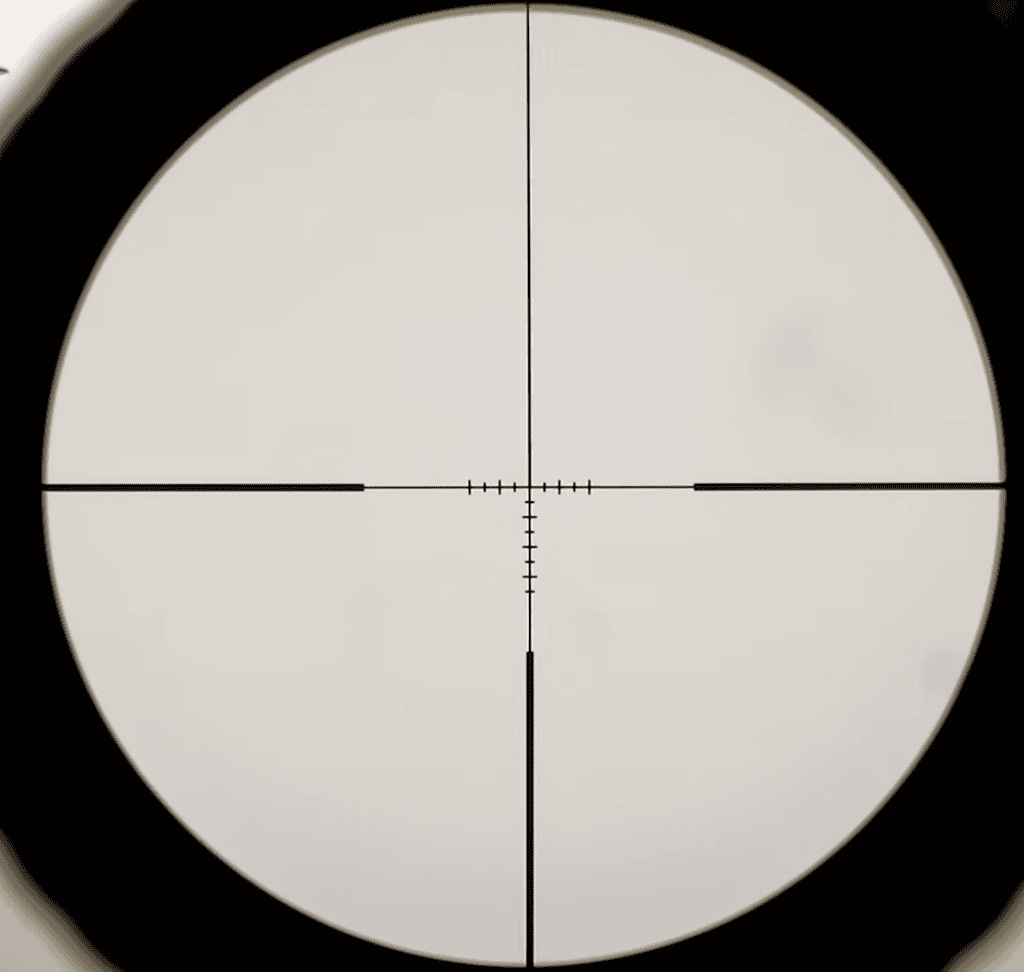
Direct Comparison Shooting
Back-to-back testing against the Primary Arms revealed the trade-offs clearly. Close-range drills favored the Vortex—that true 1x and wider view made transitions faster. At 400 yards on steel, the Primary Arms’ extra magnification showed targets more clearly. But 6x handled everything the M4 realistically needs to do with 5.56. The glass quality tilted things back toward the Vortex—scanning through brush or tracking movement, the sharper edge-to-edge image made spotting easier.
Field Test Data
| Test Parameter | Result |
|---|---|
| 100-Yard Zero Confirmation | Held zero through 550+ rounds, no shift detected |
| Close-Range Transition Speed (15-25 yards) | Average 1.2 seconds to first shot from low ready |
| Illumination Battery Life Test | CR2032 lasted 47 hours continuous at mid-brightness |
| 300-Yard Group Size (5 rounds, bipod) | 3.1 inches at 6x magnification |
| Eyebox Forgiveness Rating | Generous at 1x, acceptable at 6x with proper mounting |
Tested on: M4 Carbine | Federal American Eagle XM193 55gr FMJ
Pros and Cons
PROS
|
CONS
|
Performance Ratings
Learn more about how I test and rate scopes.
The Viper PST Gen II solves the M4 scope problem better than anything else I tested. That true 1x eliminates the close-range handicap you get with scopes that start at 1.5x or higher, while 6x provides enough magnification for the distances where 5.56 remains effective. The glass quality and reticle design feel borrowed from a more expensive tier, which they essentially are. If your M4 needs to work from contact distance to 300 yards, this scope delivers without forcing you to compromise one end for the other.
The Vortex in one of the best 1-6x scopes overally.
2. Primary Arms SLx 1-8×24 FFP – Best for Competition Use
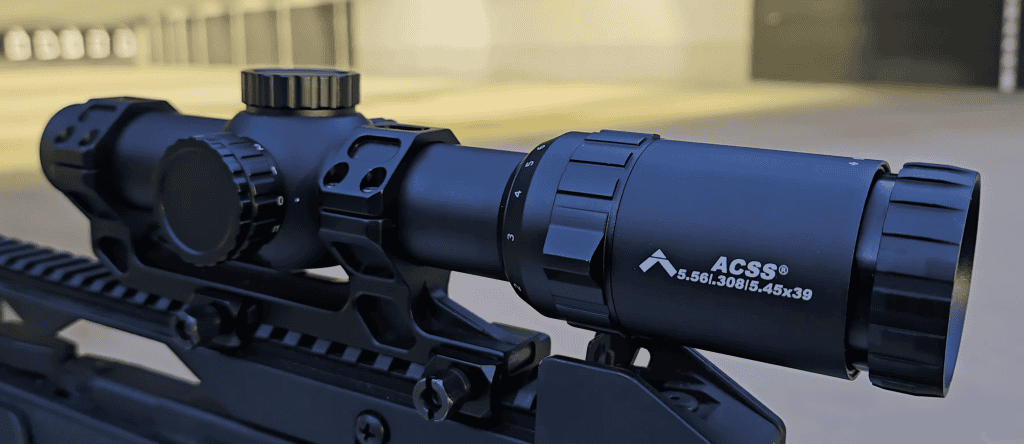
Learning the ACSS System
The large horseshoe catches your eye instantly at close range—it works like an enlarged aiming reference that frames man-sized targets naturally. I ran some basic drills at 25 yards and the horseshoe made target acquisition faster than a simple dot would have been. Dial up to 6x or 8x and the full reticle reveals itself: ranging brackets, wind holds, moving target leads, BDC marks down to 600 yards. The system looks complicated until you actually use it, then it makes sense.
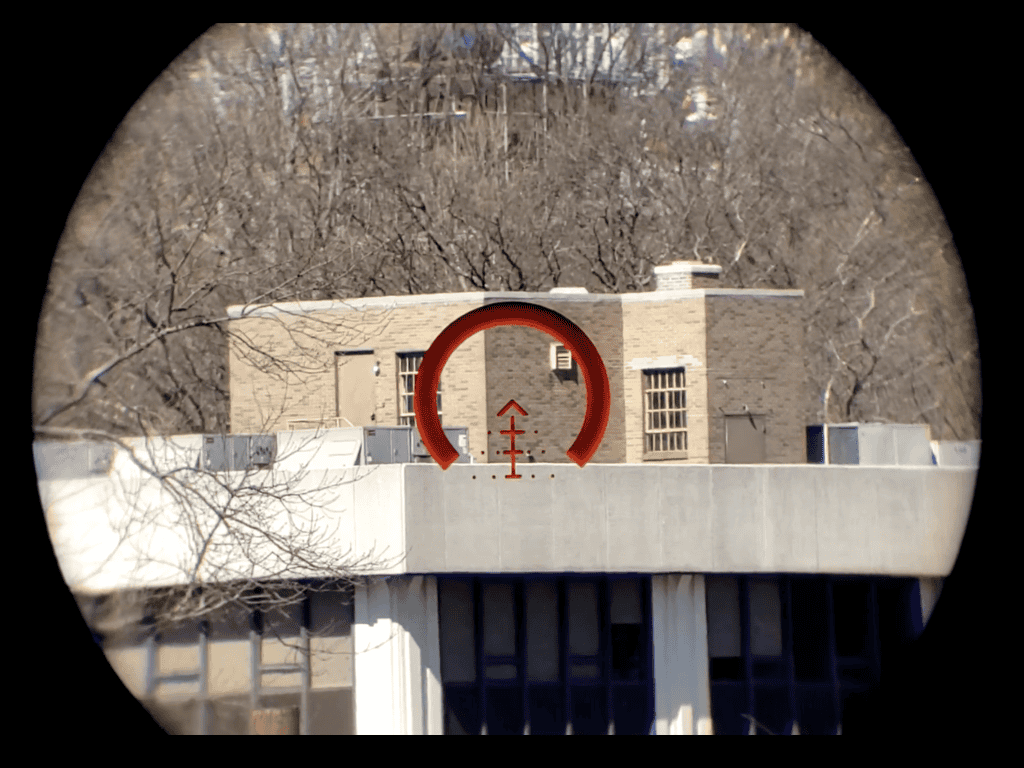
Verifying the Ballistic Compensation
I set up at 300 yards with XM193 to test whether the BDC actually corresponded to reality or was just marketing. Zeroed at 100, the marked holdover put me on an 8-inch steel plate consistently. At 400 yards, I used the next mark down and connected four out of five shots. The ranging brackets worked too—I estimated distances to unmarked targets and checked them with a laser, and the brackets got me within 15-20 yards every time. First focal plane means these subtensions stay true regardless of magnification, which matters when you’re dialing power up and down without checking your setting.
That Extra Magnification at Distance
I shot the Vortex and Primary Arms back-to-back at 400 yards to see if 8x versus 6x made a practical difference. It did. Steel I could barely make out details on through the Vortex came into clearer focus with the Primary Arms. For an M4 staying inside 300 yards, the difference is minimal. Push out to 400 or beyond and that extra magnification helps with target identification and precise aiming point selection. The scope weighs about 5 ounces less than the Vortex too, which I noticed immediately when swapping them between rifles.
Eyebox Demands Precision
The tighter eye relief showed up when shooting from awkward positions. With the Vortex or either Leupold, I could get a full sight picture even when my cheek weld wasn’t perfect. The Primary Arms required more precise head positioning, especially at higher magnifications. It’s not bad—just less forgiving. Mount the scope properly forward on the rail and establish consistent positioning, and it works fine. But if you’re constantly shooting from unconventional angles or need to acquire the optic quickly, the smaller margin for error matters.
Why Competition Shooters Choose This
The NTOA gave this scope a Gold rating, and after 530 rounds of testing I understood why it appeals to competition use. The FFP reticle stays accurate whether you’re at 3x, 6x, or 8x—you can use the holdovers at any magnification without math. The ranging system helps with unknown-distance stages. The extended magnification lets you confirm hits on distant steel. For hunting or defensive use where you’ll likely stay at 1x or maximum power, these advantages matter less. For dynamic shooting across varied distances, they become the scope’s primary selling points.
Field Test Data
| Test Parameter | Result |
|---|---|
| Zero Retention Test | Maintained zero through 530 rounds and two remounts |
| ACSS Ranging Verification (200-400 yards) | Bracket estimates within 15 yards of actual at all tested distances |
| 400-Yard Precision (5 rounds, bipod) | 4.2 inches at 8x magnification |
| Close-Range Speed (25 yards) | 1.4 seconds average to first shot, slower than Vortex |
| Illumination Daylight Performance | Daylight-bright on highest 3 settings, adequate visibility |
Tested on: M4 Carbine | Federal American Eagle XM193 55gr FMJ
Pros and Cons
PROS
|
CONS
|
Performance Ratings
Learn more about how I test and rate scopes.
If you shoot 3-gun, run-and-gun matches, or regularly push your M4 past 300 yards, the Primary Arms makes more sense than the Vortex. That ACSS reticle and FFP design shine in scenarios where you’re moving between vastly different distances without time to reference range cards. The weight savings is real, and the 8x top end extends your capability. The tighter eyebox and slightly inferior glass are acceptable trade-offs for the specialized features you gain. For general-purpose use, the Vortex’s better close-range performance wins—but for competition, this scope’s unique strengths justify its spot in your safe.
3. Leupold VX-Freedom 1.5-4x20mm – Best Lightweight Option
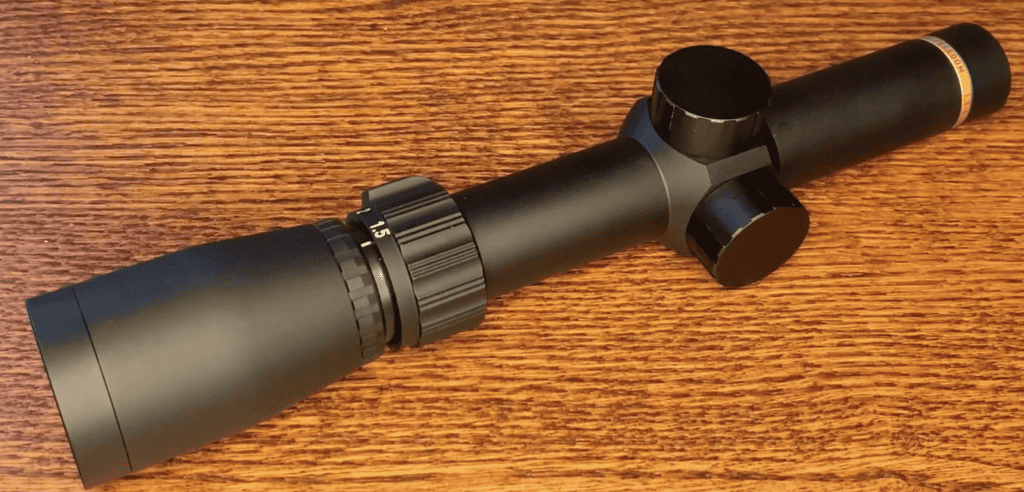
Immediate Handling Difference
I swapped this Leupold onto the same M4 that had been wearing the Vortex, and the rifle transformed. The balance point shifted back toward center, the muzzle came up faster, transitions between targets felt quicker. Not just lighter on paper—noticeably different when shooting. For a hunting rifle you carry all day and shoot a few times, this matters more than any feature list. The M4 felt like an M4 again instead of a front-heavy precision rifle.
Close Range Reality Check
Starting at 1.5x instead of true 1x created problems I didn’t expect. I ran basic room-clearing drills and the narrower view made me slower finding targets. The difference between 1x and 1.5x sounds minor until you’re looking through it at 15 yards trying to transition between doorways. Both eyes open helps, but you’re still viewing the world through magnification when the situation demands speed. I could make it work, but the Vortex was simply faster at close distances. This scope makes sense for coyote hunting or varmints where you’re rarely inside 50 yards—not for tactical applications.
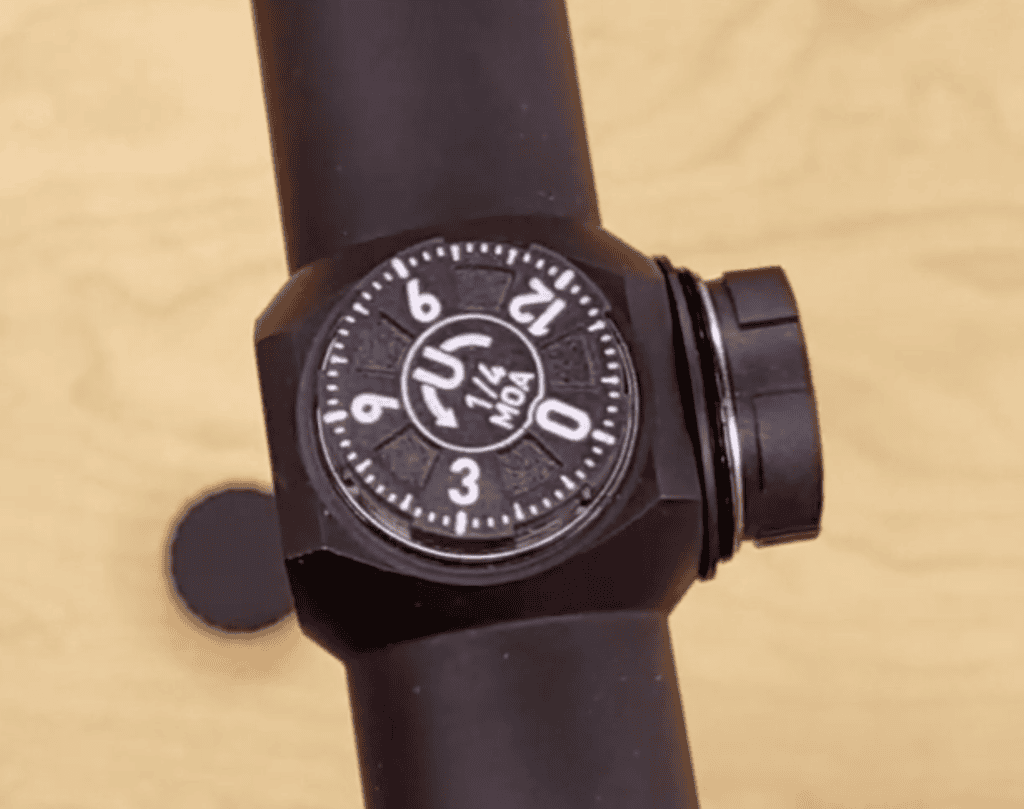
Where Leupold’s Glass Shines
At 200 yards in late afternoon light, I compared all four scopes on the same steel targets. The Leupold resolved details more clearly than anything else in the test despite having the smallest objective lens. I could see texture on the target faces that looked slightly softer through the Vortex and noticeably hazier through the Primary Arms. Leupold’s coating technology actually works—the image stayed sharp edge to edge without the slight peripheral softness I noticed in the other scopes at maximum power.
Reticle Visibility Problems
Testing in dim conditions inside a covered shooting bay exposed the no-illumination limitation. The black MOA-Ring reticle faded against dark targets, especially in the shadows. I had to hunt for the aiming point when the Vortex and Primary Arms both stayed clearly visible with their illumination activated. The large outer ring helps at low power—it catches your eye faster than a simple crosshair. But against dark backgrounds in low light, this scope loses the tactical viability the illuminated options maintain.
The 4x Magnification Ceiling
I pushed this scope out to 300 yards to see where the magnification limit became an issue. At 4x, I could hit center mass on torso-sized steel, but precise shot placement on smaller targets required holdover guesswork rather than confident aiming. The Vortex at 6x and especially the Primary Arms at 8x made those shots clearer and more repeatable. For predator hunting inside 250 yards or whitetail in thick cover, 4x handles the job. If you’re regularly shooting prairie dogs or coyotes past 300, you’ll want more magnification than this scope offers.
Field Test Data
| Test Parameter | Result |
|---|---|
| Weight Impact on Handling | Minimal front-end weight, fastest transitions in test |
| 200-Yard Group (5 rounds, bipod) | 2.4 inches at 4x magnification—best precision result |
| Low-Light Reticle Visibility | Reticle faded in dim conditions, limits tactical use |
| Zero Retention (400 rounds) | Perfect—no shift detected across multiple sessions |
| Glass Clarity Comparison | Edge-to-edge sharpness exceeded both illuminated competitors |
Tested on: M4 Carbine | Federal American Eagle XM193 55gr FMJ
Pros and Cons
PROS
|
CONS
|
Performance Ratings
Learn more about how I test and rate scopes.
The VX-Freedom 1.5-4x20mm succeeds in a specific role: keeping weight off your M4 while providing adequate magnification for hunting and ranch work inside 250 yards. The glass quality is legitimately impressive, and that 9.6-ounce weight makes the rifle feel nearly bare. But the lack of illumination and the 1.5x minimum magnification disqualify it for defensive or tactical applications where close-range speed matters. If you’re building a lightweight 5.56 hunting rifle and your shots happen between 50 and 200 yards in good light, this scope delivers excellent value. For an M4 that needs to handle both CQB scenarios and distance work, the Vortex’s illumination and true 1x are worth the weight penalty.
This Leupold is also one of my top choices for the Marlin 336.
4. Leupold VX-Freedom 3-9x40mm – Traditional Hunting Alternative
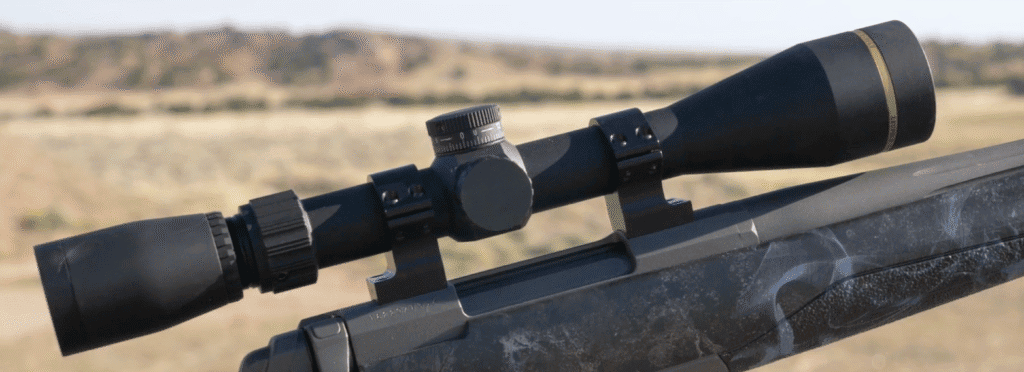
Wrong Tool for the Job
I mounted this scope knowing it would be problematic for an M4, but I wanted to test it anyway because shooters keep asking about traditional hunting scopes on AR platforms. The first close-range drill confirmed my suspicions—at 20 yards, looking through 3x magnification at a target that filled most of my narrow view, I felt like I was aiming through a telescope at something standing next to me. The tunnel vision effect was immediate and disorienting. I tried running transitions between three close targets and gave up after struggling through two repetitions. This scope isn’t designed for what the M4 does best.
Where It Actually Works
I took the rifle out to 200 and 300 yards where traditional hunting scopes belong. Here the 3-9x made sense. At 9x, I could see my impacts on steel clearly, make precise holdovers, and place shots exactly where I wanted them. The Duplex reticle—just thick posts surrounding fine crosshairs—provided a clean sight picture without distractions. For sitting at a bench shooting groups or glassing a field for coyotes, this scope does what it was designed to do. The problem is that’s not what most people need an M4 to do.
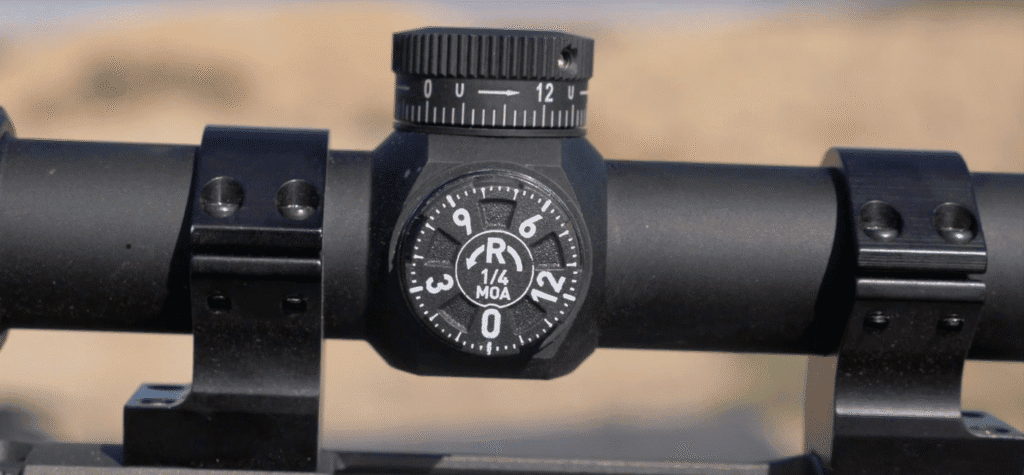
Glass Quality Saves It
The optical clarity matched the smaller 1.5-4x Leupold—edge to edge sharpness that exceeded both the Vortex and Primary Arms. That larger objective gathered more light in dawn conditions, and the image stayed bright even at 9x. I compared all four scopes at last light, aiming at the same dark-colored steel, and this scope showed the target most clearly. If you’re actually hunting from a stand at dawn and dusk where your shots happen between 100 and 300 yards, the glass quality justifies considering this scope despite its tactical limitations.
The Limitation Nobody Mentions
That narrow field of view became problematic even at distance. Scanning for targets through the scope, I kept losing situational awareness. The tunnel vision effect isn’t just a close-range problem—at 200 yards trying to locate and engage multiple pieces of steel quickly, I found myself lifting my head off the scope to see where the next target was, then getting back behind the optic. The other three scopes let me stay in the scope and transition smoothly. This one forced me to break position repeatedly.
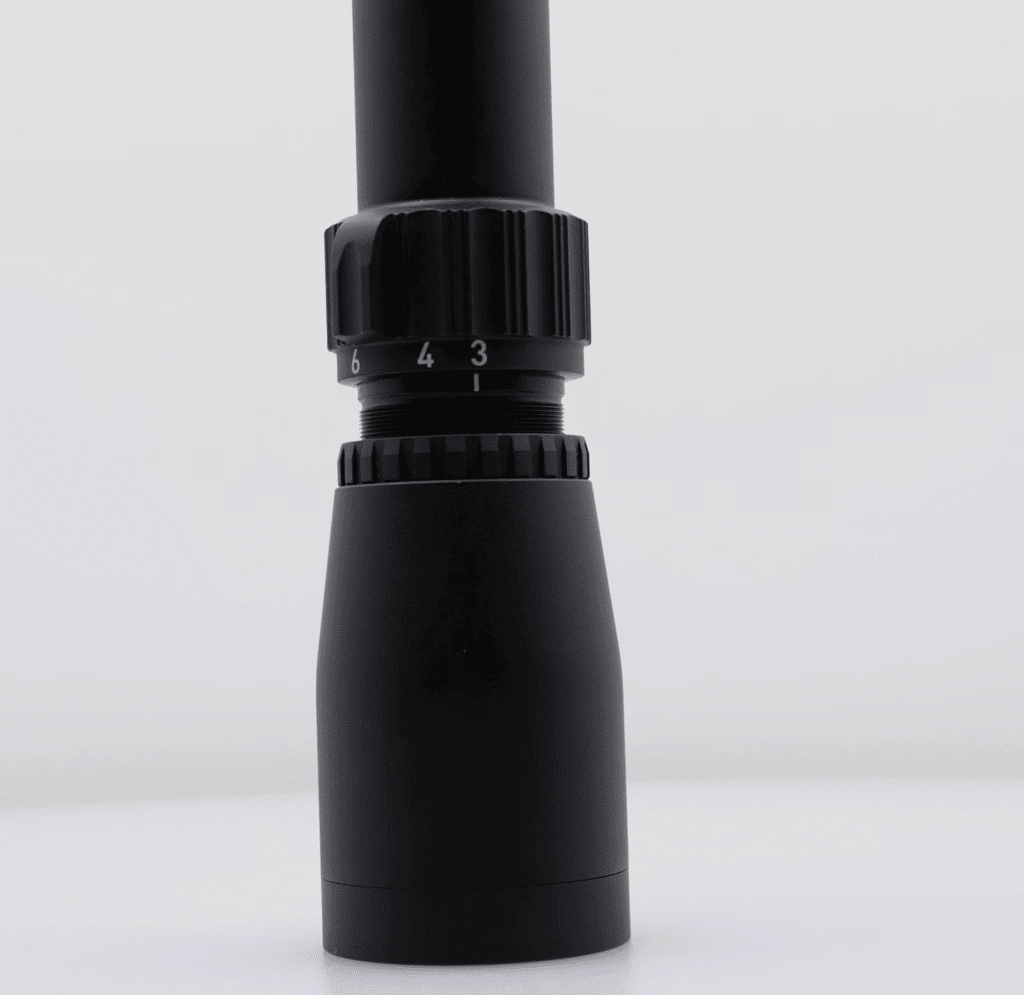
Who This Actually Fits
After 420 rounds of testing, I identified exactly one scenario where this scope makes sense on an M4: you’ve built a dedicated varmint or predator rifle in 5.56, you hunt exclusively from fixed positions where shots happen beyond 100 yards, and you’ll never need the rifle for anything requiring close-range capability. Maybe you’re shooting prairie dogs at distance or calling coyotes across open country. The scope excels at making those shots. But if there’s any chance you need your M4 to handle multiple roles—home defense, training, competition, anything involving movement—the starting magnification disqualifies it immediately.
Field Test Data
| Test Parameter | Result |
|---|---|
| Close-Range Usability (25 yards) | Poor—3x minimum creates tunnel vision, slowed target acquisition significantly |
| 300-Yard Precision (5 rounds, bipod) | 2.1 inches at 9x—best long-range group in test |
| Target Transition Speed | Slowest in test due to narrow FOV requiring frequent position breaks |
| Low-Light Performance | Best light gathering at dusk, but reticle fades without illumination |
| Zero Retention (420 rounds) | Perfect—typical Leupold reliability |
Tested on: M4 Carbine | Federal American Eagle XM193 55gr FMJ
Pros and Cons
PROS
|
CONS
|
Performance Ratings
Learn more about how I test and rate scopes.
This scope earns its place in the guide only to address the question I hear constantly: “Can I just use a regular hunting scope on my AR?” The answer is technically yes, but practically no. The VX-Freedom 3-9x40mm is a well-made scope with excellent glass, and if you’re building a specialized varmint rifle that never sees close-range use, it handles that job well. But for the M4’s intended role—versatile carbine capable of handling threats from contact distance to 300 yards—starting at 3x magnification eliminates the close-range capability that defines the platform. The narrow field of view compounds the problem even at distance. Buy this scope for a bolt-action hunting rifle where it belongs, and put something with true 1x or at least 1.5x on your M4.
It is one of the best 3-9×40 scopes out there.
How I Actually Tested These Scopes
Testing happened over six weeks during August and September at my usual range outside Dallas and on family property west of the city. Temperatures ranged from mid-80s in early mornings to triple digits by afternoon—typical Texas late summer. I mounted all four scopes on the same M4 carbine using a LaRue Tactical QD mount, which let me swap optics quickly while maintaining consistent rail positioning. Zero confirmation happened at 100 yards for each scope before moving to varied-distance work.
I shot approximately 1,700 rounds of Federal American Eagle XM193 55gr FMJ across all testing. That’s the ammunition I keep stocked for training, and it’s what most M4 owners shoot. I wanted results that reflected real-world use rather than match-grade performance. The Vortex and Primary Arms received the most extensive testing since they’re the top contenders—over 500 rounds each through various drills and distances. The Leupold scopes saw around 400 rounds apiece, which was enough to confirm their strengths and reveal their limitations for M4 use.
Three scopes failed to make the final cut. A Pinty 1-6x24mm showed unacceptable mount wobble after 120 rounds—the rail clamp loosened repeatedly despite proper torquing, and I couldn’t trust it to hold zero through a course of fire. A UTG SWAT 1-8x28mm had severe edge distortion at 1x that created a fishbowl effect during transition drills, and the illumination died completely during afternoon heat testing at 96 degrees. The Monstrum G3 1-6x24mm tracked acceptably but suffered from glass so soft at 6x that I couldn’t clearly resolve target details past 200 yards—fine for airsoft, inadequate for precision work where the M4’s capability matters. I mention these because scope selection involves as much about what doesn’t work as what does.
Testing included close-range transition drills from 15-25 yards to evaluate low-magnification performance, precision shooting from 100-300 yards to assess glass quality and tracking, and practical scenarios like engaging multiple targets at unknown distances to test reticle systems under realistic conditions. I documented zero retention by confirming point of impact at the start and end of each range session. The scopes that made this guide held zero consistently and delivered the performance their specifications promised.
Get more information on how I test optics here.
What Shooters Get Wrong About M4 Scopes
Thinking “More Magnification Is Always Better”
I see shooters constantly gravitating toward 3-9x or higher magnification ranges because they want to “stretch the rifle’s capabilities.” The M4’s 14.5-inch barrel limits your effective range with 5.56 more than your optic does. Past 400 yards, you’re fighting wind drift and energy loss regardless of magnification. Meanwhile, that 3x minimum magnification handicaps you severely at close range where the M4 excels. The sweet spot for a general-purpose M4 is 1x to 6x or 8x maximum—enough magnification for realistic engagement distances without sacrificing close-range speed.
Mounting Scopes Too Far Back on the Rail
The M4’s flattop rail extends well forward, but shooters habitually mount scopes as far back as possible to maximize eye relief. This creates two problems: the scope sits over the ejection port where brass can hit it, and you lose flexibility in head position. Mount your scope far enough forward that the ocular lens clears the charging handle at minimum magnification, then position yourself to the scope rather than bringing the scope to you. This gives you more consistent eye relief and keeps the scope away from the action.
Buying Based on Reticle Complexity Instead of Application
Complex reticles with ranging brackets, wind holds, and Christmas tree designs look impressive and sell scopes. But most M4 shooters use their rifles inside 300 yards where simple holdovers or Kentucky windage work fine. That elaborate reticle becomes visual clutter at close range and slows target acquisition. Unless you’re shooting competition or regularly engaging past 400 yards, a simple illuminated dot or basic BDC serves you better than a reticle designed for precision rifle applications.
Forgetting About Weight Distribution
Adding a scope changes your M4’s handling characteristics more than shooters expect. A heavy optic makes the rifle nose-heavy and tiring to hold on target, especially during extended range sessions or courses. The M4 platform excels partly because of its handling characteristics—adding 20+ ounces of scope and mount up front degrades that advantage. Balance matters. If your scope weighs more than your red dot by a pound, make sure the magnification capability justifies the handling compromise.
Your Questions Answered
Do I really need illumination on an M4 scope?
For tactical or home defense use, yes. Non-illuminated reticles disappear against dark backgrounds in low light, which is when defensive encounters most often happen. For hunting or recreational shooting in daylight only, you can skip illumination and save money. The capability matters more than you think until you need it and don’t have it.
Can I use a scope made for bolt guns on my M4?
Mechanically, yes—most scopes handle 5.56 recoil fine. Practically, traditional hunting scopes start at 3x or higher magnification, which eliminates close-range capability. If your M4 is strictly a bench or varmint rifle, it works. For any application requiring speed or close-quarters capability, get a scope designed for the AR platform with 1x or 1.5x minimum.
What height rings should I use?
Most AR-specific scope mounts position the optic correctly without separate rings. If you’re using traditional rings, you want the scope’s centerline about 1.5 inches above the rail to achieve proper cheek weld with an M4 stock. Too low and you’ll be craning your neck down; too high and you lose solid contact. Buy once-cry-once with a quality mount designed specifically for AR-platform rifles.
Is first focal plane worth it for an M4?
Only if you shoot competition or regularly use your reticle’s holdovers at varying magnifications. For most shooters who stay at 1x for close work and maximum power for distance, second focal plane works fine and costs less. FFP’s advantage is keeping subtensions accurate at any magnification—a feature most M4 shooters rarely use.
At What Distance to Zero?
Use a 100‑yard zero for magnified optics and precise, repeatable holds; use a 50/200 zero when you want fast, minimal‑hold hits inside ~200 yards, and confirm your far zero on your specific rifle.
Which Scope for Your Shooting Style?
If you’re running 3-gun or practical rifle competitions, the Primary Arms SLx 1-8×24 FFP gives you the tools competition demands. That ACSS reticle’s ranging system helps with unknown-distance stages, the FFP design keeps holdovers accurate regardless of magnification, and the 8x top end lets you confirm hits on distant steel. The weight savings over the Vortex matters when you’re moving between barricades or shooting multiple stages. The scope handles both close-range speed and distance precision without forcing you to choose one over the other.
For home defense or duty use where the rifle lives in a safe or patrol car, the Vortex Viper PST Gen II 1-6x24mm wins decisively. That true 1x and daylight-bright illumination work in any lighting condition you’ll face. The wider field of view helps situational awareness when threats are close. The 6x top end provides enough magnification to identify targets clearly before engaging—critical when you’re legally and morally responsible for every round. The extra weight doesn’t matter when you’re not carrying the rifle long distances.
For predator hunting or ranch work where you’re walking property and taking shots between 100-400 yards, consider the Primary Arms if you regularly push past 300, or the Leupold VX-Freedom 1.5-4x20mm if most shots happen closer and weight matters. The Primary Arms’ extended magnification and ranging system help with distance estimation on coyotes across open country. The Leupold minimizes fatigue during all-day carries and provides Leupold’s glass quality at a fraction of the weight. Neither scope handles room-clearing, but that’s not what you’re doing.
If you want one M4 that does everything reasonably well—range training, occasional competition, home defense backup, general recreational shooting—the Vortex Viper PST Gen II 1-6x24mm provides the best all-around capability. You’re not optimized for any single role, but you’re competent at all of them. That versatility costs you some weight and you give up the Primary Arms’ extended magnification, but most shooters benefit more from a scope that handles multiple applications adequately than one that excels at a single task.
Disclosure
I purchased all four scopes tested in this guide with my own money. The links to retailers in this article are affiliate links, which means if you click through and make a purchase, I receive a small commission at no additional cost to you. These commissions help support the site and allow me to continue testing and reviewing optics. My opinions remain my own—I recommend gear based on performance, not affiliate relationships. If a scope doesn’t work well, I say so regardless of potential commissions.
Final Thoughts
After six weeks of testing and over 1700 rounds fired, the Vortex Viper PST Gen II 1-6x24mm proved itself as the best overall solution for the M4’s split-personality mission profile. That true 1x magnification preserves the carbine’s close-range advantage while the 6x top end extends capability to distances where 5.56 remains effective. The VMR-2 reticle borrowed from Vortex’s premium line, combined with daylight-bright illumination that actually works in full sun, makes this scope the most versatile of the four tested.
The Primary Arms SLx 1-8×24 FFP deserves serious consideration if your M4 sees competition use or you regularly shoot past 300 yards. That ACSS reticle system and first focal plane design deliver features typically found on scopes costing significantly more. The weight savings and extended magnification matter for specific applications, even if the tighter eyebox requires more precise positioning. For specialized roles, it outperforms the Vortex.
Both Leupold scopes demonstrate why the company maintains its reputation for glass quality and construction. The 1.5-4x20mm fills a niche for lightweight hunting rifles where close-range speed isn’t required. The 3-9x40mm produces the best precision at distance but handicaps the M4’s primary strengths. Neither scope makes sense for tactical applications, but they excel in the hunting scenarios they were designed for.
Scope selection matters because the wrong optic limits what your rifle can do. I’ve seen shooters struggle with close-range drills because they mounted a 3-9x hunting scope, and I’ve watched others miss distance shots because they chose a red dot without magnification. The M4 platform deserves an optic that preserves its versatility rather than forcing specialization. Get the scope selection right from the start, and everything else about shooting your M4 becomes easier.
Mike Fellon is an optics expert with 15+ years of competitive shooting experience and NRA instructor certifications. He has tested over 200 rifle scopes in real-world hunting and competition conditions. Based in Dallas, Texas.

